How Did You “Celebrate” Media Literacy Week?
This blog post was originally published on Monday, October 30, 2023 at https://mondaymollymusings.blogspot.com/2023/10/how-did-you-celebrate-media-literacy.html by Diana Maliszewski. It is reproduced here with permission.
Last week was Media Literacy Week in Canada. (Thanks to Media Smarts for this attractive logo, which was part of their promotional kit available for free.)
I have to make a confession. Even though I am the co-vice-president of the Association for Media Literacy, and the Canadian representative for UNESCO’s Media and Information Literacy Alliance, North America and Europe Chapter, I didn’t do anything special to commemorate the occasion at my school.
Before you arrange to have my membership revoked, it’s not like I did absolutely nothing. I participated in a special Media Literacy Week edition of the Mediacy podcast on VoicEd Radio. I reported to the UNESCO MIL Alliance Regional meeting about all the neat things that Media Smarts and AML have been doing to promote the event in Canada. I’m currently enrolled in the Media Part 2 AQ course. I’ve been following Jennifer Casa Todd’s daily Media Literacy Week suggestion posts on social media – she was ahead of the game this year and posted this all the way in August! I even had the pleasure of listening to Kim Davidson conduct a guest lecture for my York University Teacher Librarianship Additional Qualification course students, and much of her talk focused on media literacy and critical thinking.
So why didn’t I do anything specific at school? If I’m being honest with myself, it’s because I ran out of time to do something meaningful (even though Media Smarts made it easy to mark the days, with pre-made images that were easy to share). If I wanted to justify the lack of action, I could argue that I celebrate media literacy week every week with the kinds of activities and question prompts I include as part of my programming. Here are a few photos from last week and some hints about how I make them “more media literate”.
Dance & Drama = Shadow Puppets
What we did: To address the problem solving and innovation strand in kindergarten, I asked students to consider what they might use as an object to cast a shadow that would make a good spout to go with their spider shadow puppet for their mini-performances of “The Itsy Bitsy Spider”.
How I infused more media into it: We took photos of the audience as well as behind the scenes to show what was going on. We talked about how it didn’t have to be an actual pipe or spout but the shadow had to make it look like one from behind. (Key Concept #2 – Media constructs versions of reality.)
How I could have infused even more media into it: We could talk more about why the spider is going up the spout and if this is a good or bad thing. (Key Concept #5 – Media communicate value messages.)
Social Studies = Battleship
What we did: To cover the expectation in the curriculum that deals with using grids to find locations on maps, we learned how to play the “board game” Battleship.
How I infused more media into it: For the older students, I paired the set up with the picture book “Playing War” and asked them to consider how the inclusion of the book changed what they thought about the game. (Key Concept #6 – Media communicate political and social messages.)
How I could have infused even more media into it: We could have talked directly about what I was alluding to with the book prompt. How is the experience of sinking a battleship in this game similar or different to being on an actual battleship? Would people in Gaza right now consider this game fun? How do the number of slots in the boats match with the type of ship and its power? (Key Concepts #1, 3 & 5)
Drama = Puppet Plays
What we did: While I worked with individuals on their face acting (see further below), I asked students to form groups and “make up” a puppet play with their team to share. We watched some of the “first drafts” of these plays.
How I infused more media into it: One of the students commented, “That wasn’t a play, that was them having a fight with their puppets”. We began to talk about what made a puppet play an actual play. (Key Concept #7 – Form and content are closely related.)
How I could have infused even more media into it: Different groups set up different puppet theatre spots. We could have talked about how the setting of the theatre impacted the type of performance. We could have discussed which play they enjoyed the most and why, and how the puppet format impacts the enjoyment of the play. (Key Concept #8 – Each medium has a unique aesthetic form.)
Library = Indigenous Prompts
What we did: We own this drum at the school. I have no idea when the school obtained it. It used to just hang in the library. As part of our SIP goal to embed more indigenous content throughout the school day, I placed this drum with two questions for the Grade 4-8 students visiting the library to choose to answer if they wished.
How I infused more media into it: The types of questions I asked probed for personal reactions (Key Concept #3 – Audiences negotiate meaning) and meaning interpretation (Key Concept #5 – Media communicate values messages).
How I could have infused even more media into it: We could have had some whole-class or small-group discussions to encourage more responses. What is it? How is it used? How was it made? How much is it worth? (Key Concept #4 – Media have economic implications.)
Drama = Face Acting with Feeling
What we did: After reading “How Are You Peeling”, we brainstormed nine emotion words. Students are to pick three of these words and “act them out” just with their faces. We have also had classes and practice with how we use certain parts of the face (eyebrows, eyes, and mouths) to convey emotions and what they mean.
How I infused more media into it: When we take the photos, the students can look to see if it was what they intended to convey, since a photo is just a split second of time captured. (Key Concept #3 – Audiences negotiate meaning.)
How I could have infused even more media into it: We could compare the different class choices. We could sort them into categories like positive vs negative or eyebrows up vs eyebrows down. We will be looking at the photos as a group and interpreting them. Which feelings look most believable and why? (Key Concept #1 – Media constructs reality.)
Media = Puppet Creation
What we did: Kindergarten students made two different kinds of puppets – a paper bag puppet and a marionette.
How I infused more media into it: We talked a bit about how the puppets move and what we could use to decorate them. (Key Concept #8 – Each medium has a unique aesthetic form).
How I could have infused even more media into it: We could have asked some more questions. Which is easier to make? Which is easier to use? What does your puppet say about you and what you like? (Key Concept #3, 5 & 7).
Media = The Word and the Definition
What we did: To become familiar with the word and what it means, as well as practice some reading, we’ve played lots of games with these letters. A favourite is for me to mix them up on the board and pairs of students come to put them in the right order. In this photo above, the Year 2 student is turning the D around that the Year 1 student had placed backwards.
How I infused more media into it: Letters are media. So are words. (We haven’t delved into this yet, but we will.) Without words, it’s hard to express ideas about things. (Key Concept #1 – Media constructs reality.)
How I could have infused even more media into it: I could have asked some questions about the orientation of the letters. If the letters are in the right order but not facing the right way, is it still readable? Why might it be wise to keep the letters facing the traditional/legible way? What might having letters face the wrong way suggest? (Key Concept #6 – Media communicate political and social messages.)
So, even though I didn’t “do much” for media literacy week, to paraphrase a different saying, EVERY week can be media literacy week!
NOTE: All images, with the exception of the first illustration, which was made available for free by Media Smarts, are photographs taken by Diana Maliszewski and are included here with permission granted to AML.


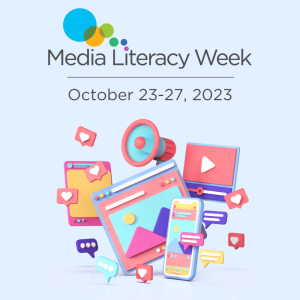
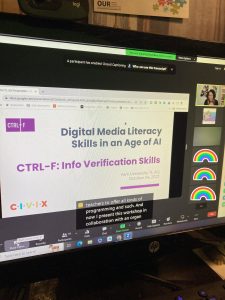
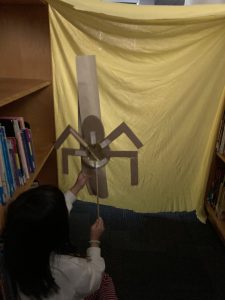
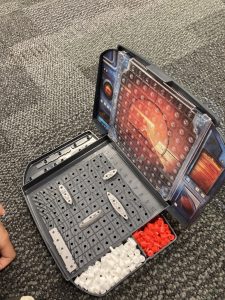
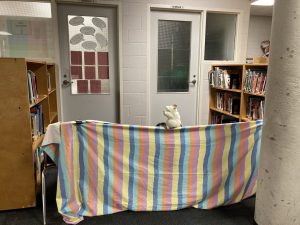
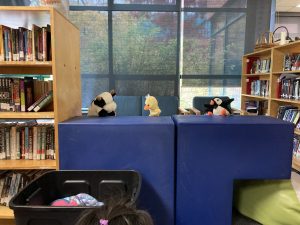
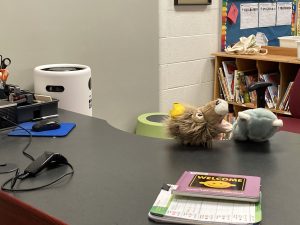
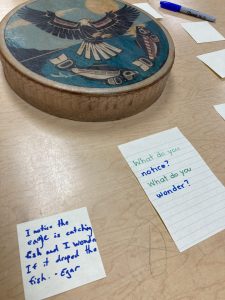

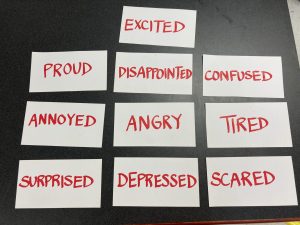
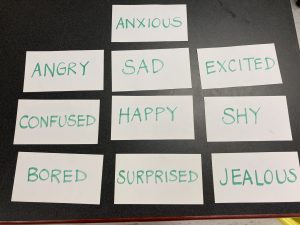
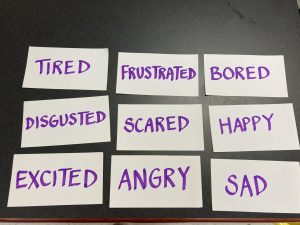




Wonderful infusions!!